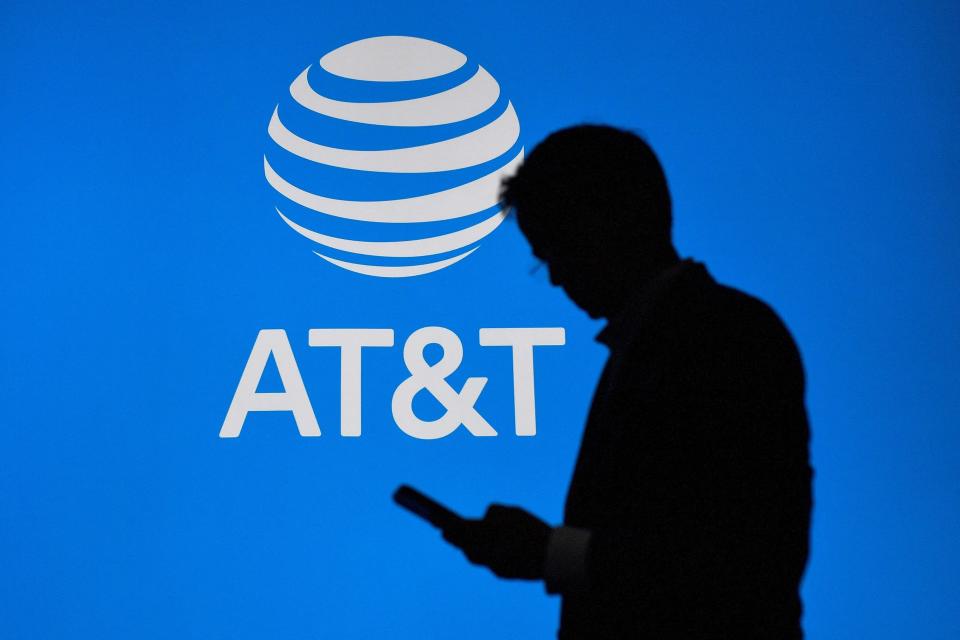AT&T to Reduce Office Locations, Call Managers Back to Office
(Bloomberg) -- AT&T Inc. is reducing its office footprint and requiring managers to show up in person at least three days a week, a move that could prompt some people to quit, Chief Executive Officer John Stankey said in an interview with Matt Miller on Bloomberg Radio.
Most Read from Bloomberg
Zelenskiy’s Surprise G-7 Stop Unnerves Critical Brazilian Leader
Traders Brace for Volatility With US Debt Deal Still Elusive
The largest US telecommunications company, which has operations in all 50 states, will consolidate into nine core offices with two main hubs in Dallas and Atlanta. The other locations are Los Angeles; Seattle; Washington; San Ramon, California; St. Louis and two New Jersey locations Middletown and Bedminster.
The return-to-office mandate, which starts in July in Dallas and Atlanta and will be implemented everywhere else by Sept. 4, will apply to more than 60,000 managers. Stankey said that 85% of those people live near one of the offices. As for the remaining 15%, “many will make decisions that are appropriate to their lives,” he said. “If they want to be a part of building a great culture and environment they’ll come along on these adjustments and changes. Others may decide, given the station of life they are in, that they want to move in a different direction.”
The company has “generous” relocation services, Stankey said. “We’ve been reconfiguring our workforce for a very long time.” He said the company will “probably be down 15,000 employees from last year to this year, when its all said and done.” AT&T has an ongoing $6 billion cost-cutting program.
Many companies have been struggling with getting workers to come back to the office after initially offering flexible work-from-home policies during the pandemic. Only about 49.3% of workers go into the office now in 10 of the largest US business districts, according to recent data from Kastle Systems. JPMorgan Chase & Co. last month told its managing directors that they now must be in the office every weekday, ending a hybrid-work practice.
International Business Machines CEO Arvind Krishna said in a recent interview that being a remote worker can be hazardous to one’s career, and that those who didn’t come into the office would be hard-pressed to get promoted.
AT&T’s attendance mandate applies to managers involved with operations and not in consumer-facing roles like union members in customer service, retail or field technicians. AT&T is also creating two categories of management employees, office and virtual. The three-day-a-week minimum attendance policy applies to most managers. About 10% of them will be “virtual” and will need to be in the office one-to-five days a month.
Stankey helped lead the phone company into media and entertainment, and then reversed course two years ago, spinning off the WarnerMedia business to Discovery. The strategy flip is intended to return AT&T’s focus entirely on selling services over fiber and wireless networks. As the company scaled down, Stankey said the pandemic proved that flexibility is good, but that employees need to work collaboratively to create “a highly dynamic culture.”
Isolation isn’t healthy, he said. Some things have “to be done sitting side by side people,” Stankey said. “When we started to ask ourselves what kind of work we need to do and how people needed to work with one another, the management team, the leadership sat down and said ‘this is what we think needs to happen.’”
Most Read from Bloomberg Businessweek
Japan’s New Military Might Is Rising in a Factory in Hiroshima
ESG Investing Goes Quiet After Blistering Republican Attacks
©2023 Bloomberg L.P.

 Yahoo Finance
Yahoo Finance 

